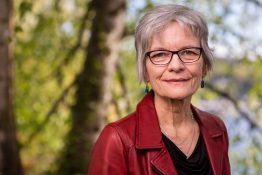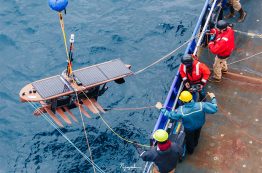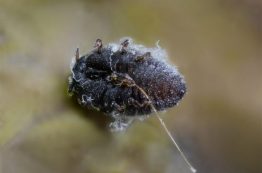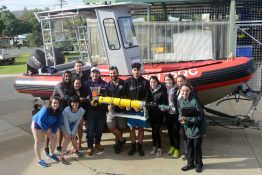Satellite images, drone photos and even Google Earth could help identify communities most at risk for getting one of the world’s worst tropical diseases. A team led by the University of Washington and Stanford University has discovered clues in the environment that help identify transmission hotspots for schistosomiasis, a parasitic disease that is second only to malaria in its global health impact.
Read more at UW News »State of the College 2019
Learn what Dean Graumlich shared at her annual address.
Read more »UW team sending autonomous surfboard to explore Antarctic waters
This week, a surfboard arrived in Antarctica. Not only was it missing a surfer, but the unique board was covered in parts that let it move independently and measure the surrounding seawater. The University of Washington project will first use the Wave Glider to investigate the summer conditions near Palmer Station on the Antarctic Peninsula, to better understand how the warming ocean interacts with ice shelves that protrude from the shore.
Read more at UW News »Old friends and new enemies: How evolutionary history can predict insect invader impacts
About 450 nonnative, plant-eating insect species live in North American forests. Most of these critters are harmless, but a handful wreak havoc on their new environment, attacking trees and each year causing more than $70 billion in damage. The problem is, scientists often don’t know which insect will emerge as the next harmful invader. A team led by the University of Washington, drawing largely on the evolutionary history of insect-plant interactions, has developed a way to understand how nonnative insects might behave in their new environments.
Read more at UW News »Summer round-up at UW Environment
Just because campus is quieter over the summer, doesn’t mean College of the Environment researchers are on vacation. From the tea plantations of Taiwan to the coral reefs of Australia to the glaciers of Greenland, UW Environment students and researchers had a busy summer deepening their understanding of the world around us both inside and outside of the classroom. Here are some examples of work done by researchers from various units, schools and departments within the College: Exploring environmental and social resilience in Taiwan 13 students spent four weeks exploring environmental and social resilience in Taiwan on a Program on the Environment study abroad trip.
Read more »





